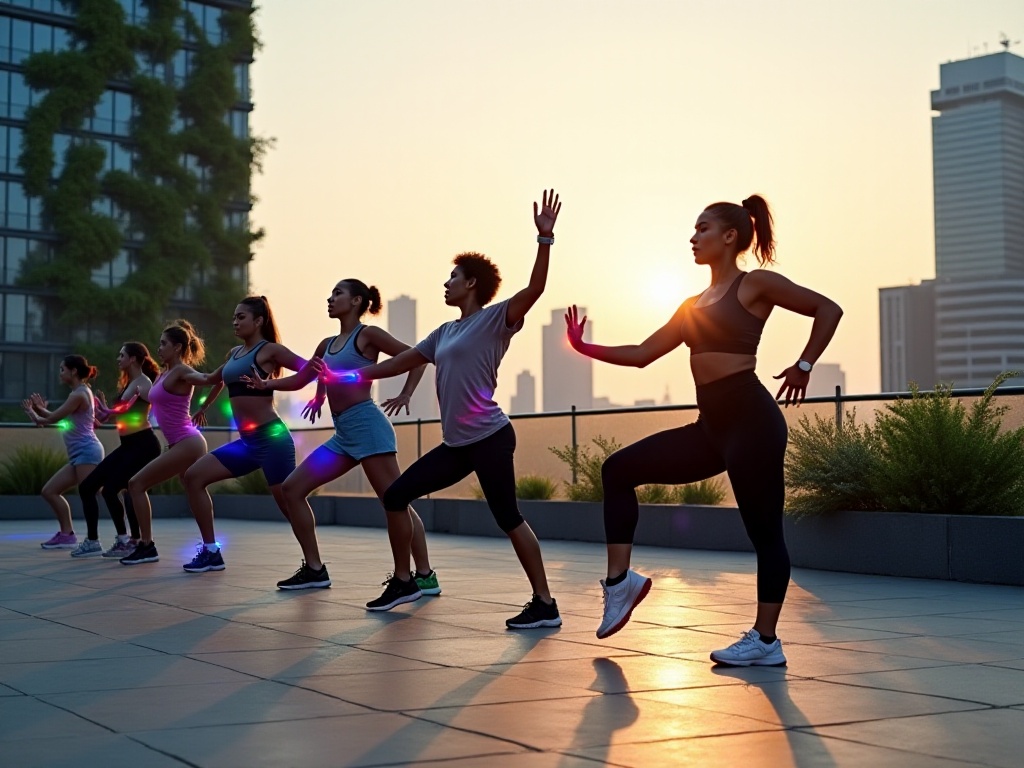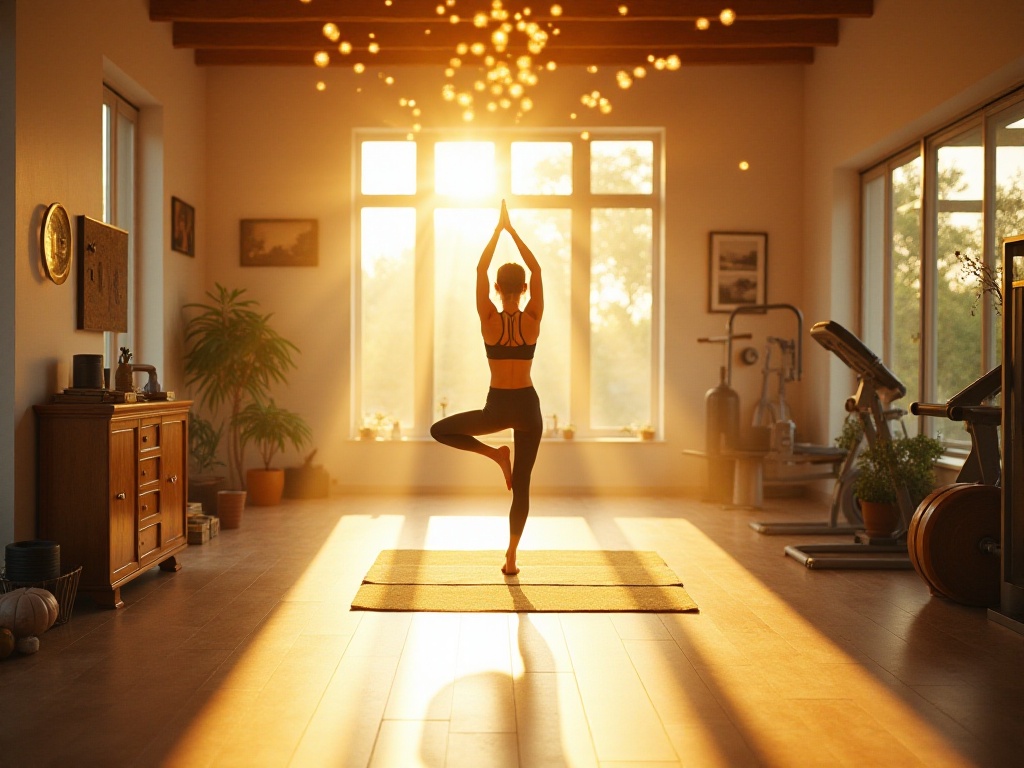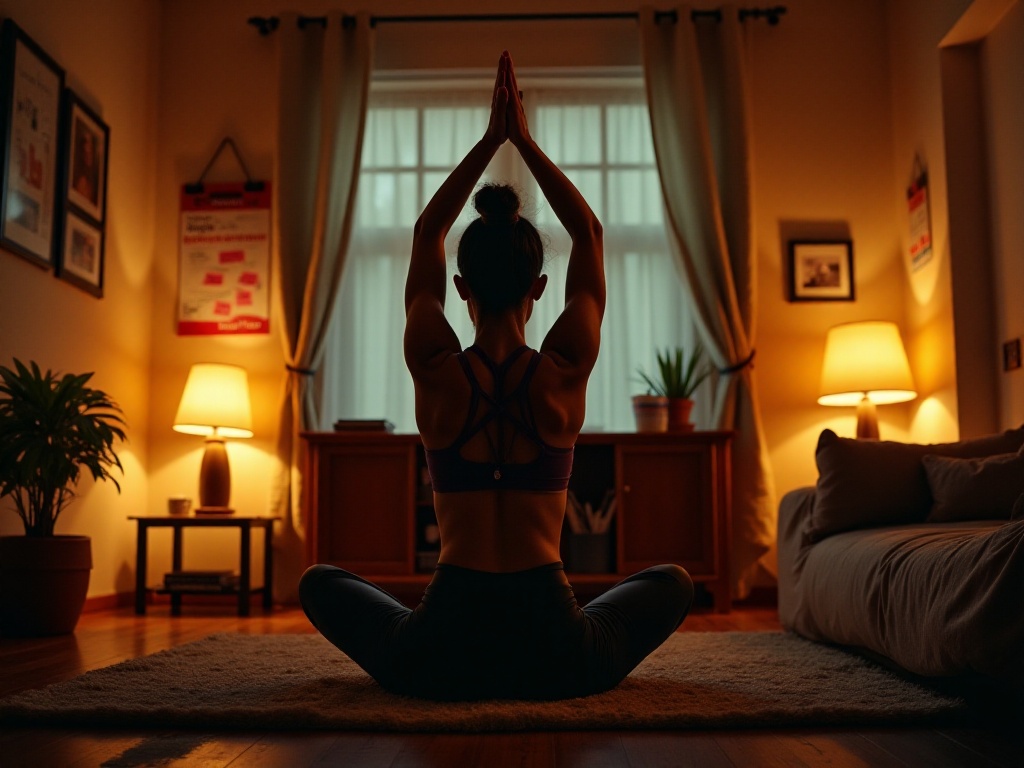Starting from Zero
As someone who has maintained a regular exercise routine for 10 years, I want to share how to scientifically develop and stick to an exercise plan. Honestly, I've seen too many people blindly pursue high-intensity workouts from the start, only to end up either injured or quitting halfway. Especially after watching fitness influencers' videos online, it's easy to fall into the fantasy of "I want to look like that." But the reality often is that after an overly intense first day, you're too sore to get out of bed the next day, and then you give up. That's why gradual progression is incredibly important.
When I first started exercising, I was a complete beginner who didn't even know how to do basic warm-up exercises. My initial goal was very simple - just 15 minutes of exercise each time. Some might say, "What can you accomplish in 15 minutes?" But it was these 15 minutes that helped me find my rhythm with exercise. During this short time, I would do some simple stretches, light jogging, or basic strength training. This approach wasn't too tiring and allowed my body to gradually adapt to the exercise routine.
Over time, I gradually increased my workout duration to 30 minutes, then 45 minutes. While this sounds easy, it actually took me nearly three months. There were times when I felt the urge to speed up my progress, but whenever I remembered that my goal was health rather than short-term results, I could remain patient and follow the progression step by step.
Looking back now, it was this gradual approach that allowed me to maintain my routine for so many years. I've seen too many friends set overly ambitious plans from the start, like running 10 kilometers daily or doing 100 push-ups at once. The results were predictable - they either had to stop due to injury or gave up because they couldn't meet their goals.
Exercise is like learning - it requires a gradual process. You wouldn't start with calculus right away, right? Similarly, exercise needs to begin with the basics, allowing your body time to adapt and improve. I suggest following the "70% rule" when creating your initial plan - reduce what you think you can do by 30%. This ensures the plan is achievable while not overtaxing your body.
Time Management
When it comes to consistency, time management is crucial. When I first started exercising, I had an "I'll work out when I have time" mentality, which often led to missing workouts due to work, dates, overtime, and various other reasons. Later, I realized that if you don't treat exercise as something important, it will always be replaced by other things.
My experience is to schedule workout times in advance, treating them as seriously as appointments. Now, every Sunday night, I plan my workout schedule for the next week, writing it directly into my calendar. This isn't just a simple phone note, but detailed planning of each day's exercise type and time slot. For example, Monday 7-8 PM is strength training, Wednesday evening is cardio, and Friday is yoga relaxation. This way, these time slots won't be occupied by other activities.
I've found that planning ahead has another benefit - it helps make life more structured. Knowing I have exercise in the evening, I won't eat too much at lunch; knowing I'm running tomorrow morning, I won't stay up late. This positive cycle not only helps maintain my exercise habit but also improves overall quality of life.
Statistics show that people who schedule their workouts in advance have a 67% higher success rate in maintaining their exercise routine. This isn't an exaggeration because planning itself is a form of commitment - once you write exercise time into your schedule, there's a sense of responsibility to complete it.
I've also developed a habit of checking my workout gear the night before. Exercise clothes, shoes, towels - everything is prepared and placed in a visible spot. This way, when I'm tempted to skip the next day, seeing this equipment reminds me: hey, it's time to exercise!

Sustained Motivation
To be honest, I used to find exercise boring too. Especially when first starting, doing the same movements and looking at the same equipment every day can easily lead to tedium. Later, I discovered a particularly effective method - mixing things up regularly.
My current exercise routine is very diverse, rotating between swimming, running, gym workouts, and yoga. Each activity has its unique charm: swimming exercises the whole body and improves cardiopulmonary function; running helps reduce stress while enjoying outdoor sunshine and fresh air; gym equipment training helps with body sculpting and muscle building; yoga improves flexibility and balance. This variety not only prevents boredom but also provides comprehensive training for different parts of the body.
I particularly enjoy combining different exercise types. For example, Monday is strength training, Wednesday is swimming, Friday is running, and Sunday is yoga. Changing activities is like changing moods - it's really interesting. Moreover, different exercises can complement each other - swimming can improve lung capacity for running, while yoga can help improve form during strength training.
Setting small goals is also important. I remember my first 30-day push-up challenge, starting from absolute basics. I could barely do 5 push-ups on day one. But I persisted daily, gradually increasing the number. By day 15, I could do 15; by day 30, I could do 30 consecutive push-ups! That sense of progress becomes addictive.
Later, I participated in various challenges, like plank challenges and squat challenges. Completing each challenge not only improved my physical fitness but more importantly built confidence. Looking back, it was these successive small goals that kept me going further on my fitness journey.
I also often set up fun reward systems for myself. For example, I reward myself with new running shoes after exercising consistently for a month, or try a restaurant I've wanted to visit after completing certain challenges. While these rewards aren't big, they provide extra motivation.
Sometimes I hit plateaus where it feels like there's no progress despite continued effort. During these times, I review my exercise diary to see how far I've come. From being able to do 5 push-ups to 30, from being out of breath after 1 kilometer to easily running 5 kilometers. These comparisons clearly show my progress and help reignite my motivation.

Life Integration
You might say, "I'm busy every day, where's the time for exercise?" This is probably what many people think, and I used to think the same way. Work, study, and socializing already take up most of our time, and it's indeed not easy to specially set aside one or two hours for exercise. But later I discovered that exercise can actually be perfectly integrated into daily life.
For instance, I never just sit idly while watching TV anymore - I use commercial breaks to do squats or planks. While watching dramas, I'll do some simple stretches. This way, not only does it not feel like wasting time, but I can multitask, relaxing while exercising.
A major concern for office workers is prolonged sitting. My solution is to get up and move around every hour. You can take extra steps when going to the break room for water, or take a longer route to the bathroom. Lunch breaks can also be utilized - find a quiet corner to do some simple office exercises. These seemingly insignificant movements add up to something substantial.
I particularly like turning commute time into exercise time. If you live relatively close to work, you can choose to walk or cycle. If the distance is longer, you can get off one stop early and walk the rest of the way. This is environmentally friendly and healthy, while also avoiding rush hour traffic.
When shopping on weekends, I deliberately choose to walk to the supermarket, combining shopping with exercise. Shopping bags can serve as weights, and by deliberately quickening your pace while walking, you can achieve an aerobic exercise effect.
Research shows that accumulating 10 minutes of exercise throughout the day is about as effective as exercising for 30 minutes at once. This discovery was particularly encouraging because it means we don't have to carve out large blocks of time for exercise. Spreading exercise throughout different times of the day is actually easier to maintain and better suits modern people's fragmented lifestyle.
Now I record my exercise time daily, including these fragments of exercise. Gradually, you'll discover that there's actually much more time available for exercise than you might imagine. The key is to consciously discover and utilize these pockets of time.

Home Innovation
Speaking of home exercise, it really made me discover another possibility for working out. I used to think you had to go to the gym and have professional equipment to exercise. But later I found that many household items can become exercise equipment.
Two water bottles can serve as dumbbells, and a towel can be used as a resistance band. Books can be used for weight training, and chairs for tricep dips. I even used a backpack filled with books to adjust weight, creating an adjustable weight training equipment. These creative solutions not only save money but allow you to exercise anytime, anywhere.
Furniture can also be well utilized. The sofa can be used for push-ups, walls for wall push-ups, and stairs for step exercises. These are all excellent strength training methods. I even installed a pull-up bar in the hallway between my living room and bedroom, doing a few pull-ups every time I pass by.
I've specifically cleared out a small corner for my yoga mat, so seeing it reminds me to exercise. This exercise corner, besides the yoga mat, has some simple equipment like an exercise ball, resistance bands, and foam roller. Though the area isn't large, it has all the necessary equipment. Statistics show that people with dedicated exercise areas at home increase their weekly exercise frequency by an average of 2.5 times. This isn't an exaggeration because when you have a dedicated exercise space, you'll unconsciously want to use it.
Besides hardware facilities, I also pay special attention to creating an exercise environment. I placed a full-length mirror in the exercise corner to monitor my form. I also bought a small speaker to play energetic music while exercising, which creates a better atmosphere.
I've also put up some motivational exercise slogans and photos in my room - these visual cues can motivate you when you're feeling lazy. Sometimes just seeing these slogans is enough to get you up and moving.
To make home exercise more interesting, I often follow online workout videos. There are now abundant online exercise resources, from yoga to HIIT, from dance to strength training. Following videos not only helps learn correct form but also creates a sense of exercising with others.

Improving Results
To improve exercise effectiveness, details really matter. Now I prepare a dedicated music playlist for each workout, filled with upbeat music. I use different styles of music for different exercises - electronic music with strong beats for running, and soothing light music for yoga. Research shows that people who exercise with music extend their workout time by an average of 23%.
Besides music, I pay special attention to pre-workout preparation. I always do thorough warm-ups before exercising, which not only prevents injury but also enhances the effectiveness of the subsequent training. Warm-ups include full-body joint mobility and simple stretches, usually taking 10-15 minutes. Many people think warming up is a waste of time, but it's actually key to improving exercise effectiveness.
Post-workout stretching is equally important. I spend 15-20 minutes doing some gentle stretches, which helps muscles relax and reduces next-day soreness. Sometimes I also use a foam roller to massage areas prone to fatigue, like thighs and calves.
Regarding diet, I've made many adjustments. I consume appropriate carbohydrates before exercise for energy, and protein within 30 minutes after exercise to help muscle recovery. I also make sure to drink plenty of water to maintain hydration. These details may seem simple, but they're all important for improving exercise effectiveness.
I've also developed a habit of recording exercise data. I use a fitness tracker to record heart rate, step count, calories burned, and use phone apps to record each training session's content and feelings. Through this data, I can clearly see my progress and adjust training plans accordingly.

Social Interaction
Finally, I want to discuss the social aspect of exercise. Finding an exercise partner is really important! Data shows that people with exercise partners are 80% more likely to stick with their routine. This isn't an exaggeration because having company really makes the whole process more enjoyable and easier to maintain.
Now I meet friends at the gym weekly, where we monitor and encourage each other. Sometimes when I don't feel like going, thinking about the friend waiting for me makes it hard to back out. During exercise, we can correct each other's form and share experiences, which feels great.
We also organize small exercise challenges, like who can do the most push-ups in a month, or who can first complete a 10-kilometer run. This positive competition not only adds fun to exercise but also encourages everyone to persist.
Social media is also a great platform. I share my exercise photos and thoughts on social media and follow some fitness bloggers. This not only records my progress but helps me meet like-minded friends. Sometimes receiving encouragement and advice from friends is really heartwarming.
I've also joined some fitness communities that often organize offline activities like weekend hiking or marathon training. Participating in these activities not only helps meet new friends but also learn new exercise knowledge and techniques.
You see, exercise isn't actually that difficult - the key is finding what works for you. How do you arrange your exercise routine? Feel free to share your experiences in the comments. I believe through exchange, we can all go further on our fitness journeys.







